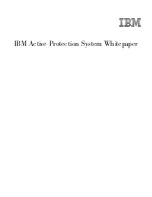
Backup System Processes
On the backup system:
•
There is one receiver process for each configured extractor process. A receiver accepts the
image records from its extractor, sorts them, and then writes them to the appropriate RDF
image trail.
•
There is one updater process for each primary system volume being protected by RDF.
Updater processes read image records from their RDF image trails and pass them to the
disk process so that the disk process can perform the logical REDO operations. The backup
database is updated in cache each time the disk process performs a logical REDO operation
requested by an updater process.
•
The purger process interacts with the updaters to determine when image files can be purged,
and also determines which transactions updaters must undo for takeover and
stop-update-to-time operations.
RDF Operations
RDF can be run with updating of the backup database either enabled or disabled.
When updating is enabled, the RDF processes maintain a current, online copy of the primary
database on the backup system. By default, the subsystem starts with updating enabled, and the
RDF processes continue their updating activities until updating is explicitly disabled or the
subsystem is shut down.
When updating is disabled, the extractor process still transmits the TMF audit records from the
audit trails to the backup system, but no changes are applied to the backup database. The receiver
continues to collect audit records from the extractor and writes these records to the image trails.
However, the updater processes do not run while updating is disabled.
Updating can be explicitly enabled or disabled through RDFCOM commands, as described later
in this manual. If takeover performance is critical, you should run RDF with updating enabled.
If updating is disabled, it is possible for the image trails to fill up; also, it may take significant
time for the updaters to apply all audit records when a takeover operation is started.
The monitor, extractor, receiver, RDFNET, updater, and purger processes run as process pairs.
Monitor Process
The monitor process is a process pair that normally runs on the primary system. This process is
responsible for starting, stopping, and monitoring all other RDF processes on the primary and
backup systems.
Extractor Process
An extractor process is a process pair that runs on the primary system. Each extractor process
reads an audit trail (the MAT or a particular auxiliary audit trail), filters out audit records not
relevant to the backup database, and then transmits the relevant audit records over the Expand
network to an associated receiver process on the backup system, as shown in
Figure 1-5
.
42
Introducing RDF
Содержание NonStop RDF
Страница 68: ...68 ...
Страница 186: ...186 ...
Страница 260: ...260 ...
Страница 278: ...278 ...
Страница 284: ...284 ...
Страница 290: ...290 ...
Страница 308: ...308 ...
Страница 322: ...322 ...
Страница 336: ...336 ...
Страница 348: ...348 ...
Страница 464: ...464 ...
Страница 478: ......
















































